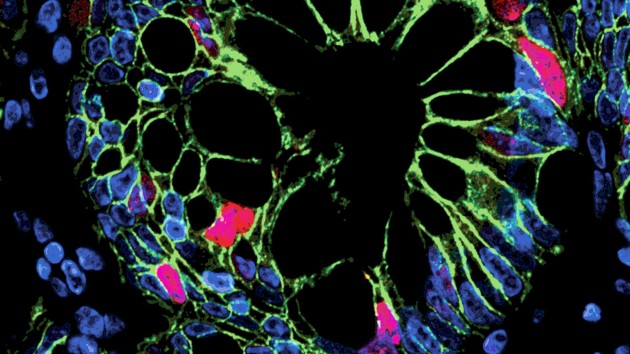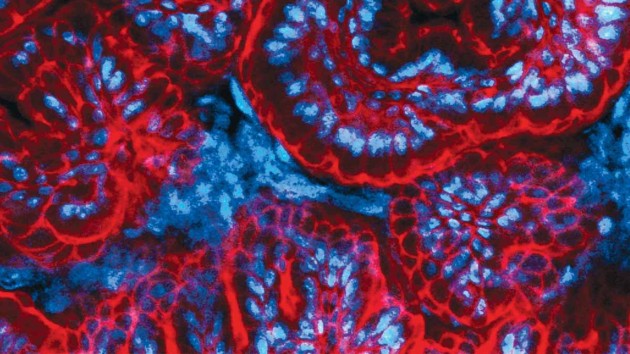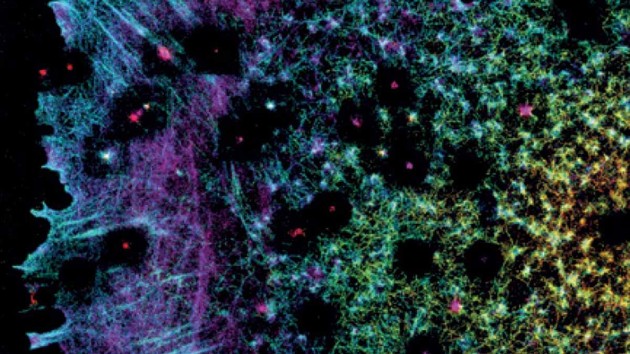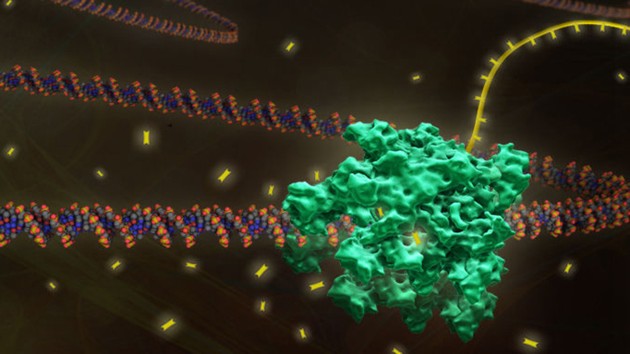Collection |
Collections
Filters
-
Collection Type
-
-
Collection |
 The 3D genome
The 3D genome
This collection includes recent articles from across the Nature group of journals and showcases both the latest advances in the methodologies used to study genome organization, and our recent understanding of how genome organization and nuclear architecture regulate gene expression, cell fate and cell function in physiology and disease.
Image: V. Summersby -
Collection |
 The multidisciplinary nature of machine intelligence
The multidisciplinary nature of machine intelligence
This collection marks the launch of Nature Machine Intelligence by exploring recent developments in the field and their impact on science, industry and society.
-
Collection |
 Stem cells from development to the clinic
Stem cells from development to the clinic
Stem cells are well on their way into the clinic and can be used in a variety of applications, such as disease modelling, drug screening and for regenerative medicine. This collection showcases research articles, reviews and protocols from across the Nature journals to highlight the striking advances made in basic and translational stem cell research.
Image: Miguel Quiros and Asma Nusrat -
Collection |
 Organoid research
Organoid research
Organoids are 3D organ models with remarkable potential in basic and translational research. This collection showcases research articles, reviews and protocols from across the Nature journals to highlight the striking advances made.
Image: Nick Barker and Marc Leushacke -
Collection |
 Super-resolution microscopy
Super-resolution microscopy
Popularization of super-resolution imaging techniques has allowed cell biologists to probe cell structure and function in previously unattainable detail. These methodologies continue to evolve, with new improvements that allow tailoring the available techniques to a particular need and application. This collection showcases primary research articles, reviews and protocols and highlights these recent developments by exemplifying the new, interesting applications of super-resolution microscopy as well as related tool development.
Image: Bertocchi et al., Nature Cell Biology volume 19, pages 28–37 (2017). -
Collection |
 The FANTOM5 Project
The FANTOM5 Project
A collection of research and data papers published across Nature Research, from the fifth cycle of the Functional ANnoTation Of the Mammalian genome project (FANTOM).
Image: Richard Janissen - TU Delft -
Collection |
 Cancer Evolution
Cancer Evolution
In this collection, the cancer editorial community of the Nature journals presents the most recently published articles on cancer evolution. The topic is discussed from different angles (preclinical, translational and clinical), and across a range of tumour types.
-
Collection |
 Computational Biology
Computational Biology
Advances in technology across all areas of science have ushered in an era of big data, providing researchers with unprecedented opportunities to understand how biological systems function and interact. Scientists are now faced with the challenge of developing sophisticated computational tools capable of unravelling these data and uncovering important biological signals. Computational biology will continue to play a key role in facilitating multi-disciplinary collaborations, encouraging data sharing and establishing experimental and analytical standards in the life sciences.
Image: Sam Rios -
Collection |
Clinical applications of next-generation sequencing
Translating the power of high-throughput sequencing technologies from the research sphere into the clinic is a current major focus for many health-care providers and researchers, and the power of these technologies is being harnessed to address an increasingly diverse range of problems. Excitingly, real benefits for patients are starting to emerge in areas from infectious disease and cancer, to common and rare genetic disorders and pre-natal testing. At this critical turning point, this collection highlights the breadth of applications of next-generation sequencing technologies in the clinic and the importance of the insights that are being gained through these methods to improve health.
-
Collection |
SEQC
This Web Collection presents the results of the RNA Sequencing Quality Control (SEQC) project that sought to evaluate the reproducibility and comparability of high-throughput sequencing of RNA (RNA-seq). Data from several different laboratories are compared and the performance of different sequencing platforms and data analysis approaches are assessed, together with benchmarking against DNA microarrays. Ultimately, these multi-platform, cross-site studies will enable RNA-seq to be applied more broadly in analyzing large cohorts for discovery research and clinical use. This is the latest phase of a collaboration between government, academic and industry researchers as part of the MicroArray Quality Control (MAQC) consortium.We are grateful for the support of our sponsors, the FDA's National Center for Toxicological Research (NCTR/FDA) and the State Key Laboratory of Genetic Engineering (SKLGE) at Fudan University. As always, Nature Research carries sole responsibility for all editorial content.
-
Collection |
Collection: Nobel Prize in Chemistry 2014
The 2014 Nobel Prize in Chemistry was awarded for the development of superresolution fluorescence microscopy, which enables the imaging of fine biological structures previously thought to be unresolvable using light. This collection of news pieces and articles by the Nobel laureates and their collaborators celebrates this achievement.

 Cartilage repair and regeneration
Cartilage repair and regeneration